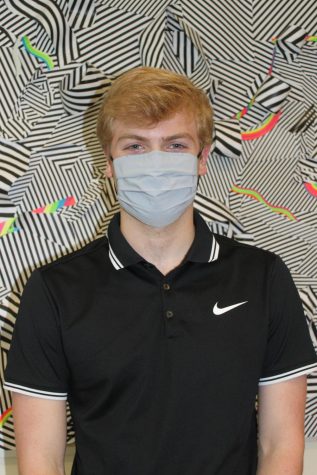You Should Watch ‘Stop Making Sense’ Right Now
Saying the Talking Heads’ 1984 concert film Stop Making Sense is great isn’t exactly a hot take. To many, it’s a bit like saying Michael Jordan was good at basketball, citizens of Paris were pretty upset in 1789, or that Viper has released a lot of music (according to the rapper’s Wikipedia page, he has released over 1,500 albums in his career). If you do a quick Google search of the best concert films of all time, Stop Making Sense never falls very far from the top spot on any list. In lieu of this, I know it’s somewhat boring to compose an entire article saying how incredible the movie is, but quite frankly, I just really wanted to write about it because it (and the Talking Heads’ music, for that matter) is really like nothing else.
The show starts off with the band’s singer and frontman, David Byrne, alone on stage. Byrne designed the show, and he’s the biggest reason the film works so well. Not only is the music he performs and largely wrote (there has been some controversy over how much Byrne actually wrote himself) fantastic, but his stage presence is utterly captivating for the entire 88 minutes of runtime. The choreography and presentation are eccentric to the last detail, from Byrne’s feigned tripping over while he performs the opener, an acoustic version of one of the band’s most famous songs, 1977’s “Psycho Killer,” to Byrne sprinting around the stage in “Life During Wartime” (he had to have burned thousands upon thousands of calories during the four-night-long filming in Los Angeles), to the gigantic suit he dances in during “Girlfriend is Better.” There is always a sense of energy on stage, and it feels more like a deeply theatrical performance rather than a more traditional concert.
After “Psycho Killer,” Byrne is joined onstage by bassist Tina Weymouth, and they perform probably the most laid back song on the album, “Heaven.” Weymouth, on the whole, does an excellent job in the show, especially given how bassline-oriented several of the songs are. Weymouth also briefly sings, when the band plays “Genius of Love” by Tom Tom Club, a group founded by Weymouth and her husband and Talking Heads drummer Chris Frantz, but I’m not particularly a fan of Weymouth or Frantz’s vocals, though I really do like the instrumentals on that song.
Following “Heaven,” the entire band, featuring five musicians not included in the band’s traditional lineup, which included Byrne, Weymouth, Frantz, and guitarist/keyboardist Jerry Harrison, gradually come onstage, and it’s at this point when the music really kicks into high gear. The energy is especially overpowering beginning with “Found a Job,” and then going through many of the band’s hits, like “Burning Down the House,” “This Must Be the Place (Naive Melody)” (another moment of profound weirdness, as Byrne dances for an extended period of time with a lamp), “Once in a Lifetime,” and the aforementioned “Life During Wartime.” For this entire portion of the show, the beat can be so infectious, it feels wrong not to tap my foot or nod my head. However, if I do have one problem with the music, it’s – somewhat surprisingly – with “Once in a Lifetime,” maybe the most famous song by the band. It isn’t a horrible version of the track, but the instrumentation has a certain warmth to it that isn’t present on the studio recording. This gives the song a somewhat uplifting feeling, which isn’t terrible, but I much prefer the original’s sense of paranoia. The show closes after “Once in a Lifetime” with the brief Tom Tom Club cameo, “Girlfriend is Better” (the film gets its name from a lyric in this song), a cover of Al Green’s “Take Me to the River,” and then finishes with the blistering “Crosseyed and Painless,” which finishes the film with one of the band’s best-ever grooves.
Obviously, I love the content itself from Stop Making Sense, but it’s equally impressive technically, both visually and auditorily. The film’s shots are constantly impressive (the cinematographer was Jordan Cronenweth, who worked on the impeccably-shot Blade Runner), not just showing the band in alternating wide shots and closeups, but the camera often moving and always following a subject of interest, not staying for too long on any one band member or aspect of the show. It also helps that the movie was filmed over the course of four shows, giving the director Jonathan Demme and the rest of the filmmakers the ability to use different cuts of songs and certain close-ups (it’s somewhat off-putting for Byrne’s hair to switch from messy and falling onto his forehead to perfectly slicked back and back again). In terms of audio, the film (and album that was also released) is stunningly high quality for a live album recorded in 1983. The high quality can be attributed to the use of digital techniques to record the performance and leads to a clear and well-balanced sound, even just listening to the live album.
I’ll get back to the title. I seriously think anyone and everyone should watch Stop Making Sense, and it’s currently in HD on YouTube for free (whether or not this is just copyright infringement, I don’t know) without any ads. The Talking Heads never truly fit into a single genre, which, along with Byrne’s eccentric vocals, I think can alienate some listeners, but Stop Making Sense is the band at their best, and perfectly captures the uniqueness, musicianship, grooves, and energy that makes so many love the Talking Heads, and I think it’s a great place to start for someone not familiar with the group.
Your donation will support the student journalists of Chamblee High School Blue & Gold. Your contribution will allow us to print editions of our work and cover our annual website hosting costs. Currently, we are working to fund a Halloween satire edition.

Thomas Rice is a senior, and this is his second year on the staff. In five years he hopes to be celebrating a Hawks NBA Finals victory after graduating college. The movie that would best encapsulate his Chamblee experience is "Tall Girl", except instead of “Girl” it’s “Boy” and instead of being about himself it’s about Blue & Gold staff writer Adam Pohl.




slevin • Feb 4, 2021 at 3:59 pm
TASTE! 😌